
How to Identify & Fight Grow Room Pests
It's getting warmer and the bugs are coming! By hook or by crook, they’ll try to sneak into your grow room and ravage your plants.
If they break past your first defences, all’s not lost. You can still win the war. Here’s how you prevent, identify and defeat common grow room pests.
Always be on the Lookout
Don’t wait until they've destroyed your plants. Instead, create an ongoing strategy for preventing, spotting and fighting pests.
This is called an IPM (Integrated Pest Management) strategy:
- Prevention: Spider mite sachets, bug blockers (more here)
- Inspection: Check for pests every 5 days using a magnifying glass
- Treatment: Biological control (natural predators) and pest sprays
Spider Mites
Spider mites are very common, but easily treated.
Identify
Look out for small, yellow speckles on the top surface of leaves – a sure fire sign that mites have been feeding.
The undersides of leaves may also contain tiny white dots that are either the mites and/or their eggs. Webbing occurs in the latter stages of an infestation.
Combat
You can use natural predators:
- Using sachets (preventative): Put 1 - 2 in a propagator, 1 per plant (veg) or 1 - 2 per plant (flowering)
- Via a bottle (treatment): Sprinkle the contents around your room & leave the opened bottle at the base of plants
You can also use sulphur:
- Using Hotbox Sulfume (treatment): A 2kg dose of sulphur will treat areas from 2m3 - 10m3 for about a year.
- Using a Fortefor P Fumer: This'll fumigate aread up to 80m3 (only use between crops)
After eradicating pests, clear off residue and dead bugs by spraying your plants once with water. Then remove damaged leaves and keep temperatures down to slow the rate of spider mite breeding. 
Extensive Damage on a Cucumber Plant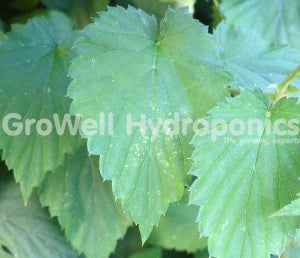
Infestation on a Cucumber plant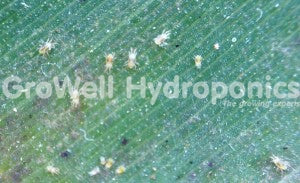
Early Damage on a Hop Plant
Extensive Damage on a Hop Plant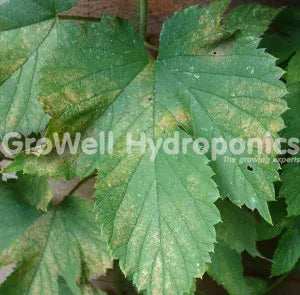
Close up of Spider Mite Adults, Nymphs and Eggs
Spider Mites and Eggs on Webbing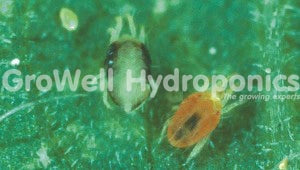
Close up of a Two Spotted Spider Mite, a Red Spider Mite and an Egg
Thrips larvae
Thrips are most harmful to plants at the larval stage.
Identify
Search for silvery grey trails along the tops of leaves and small black deposits (their excretion) on the opposite side.
The larvae feed by rasping the leaf surface, leading to distorted growth and loss of colour.
Combat
Take off infected leaves and apply Pyrethrum 5 EC / Protector as a foliar spray. This should eliminate Thrip Larvae in vegetative and early flowering growth. You can also try using natural Thrip Predators or Nematodes.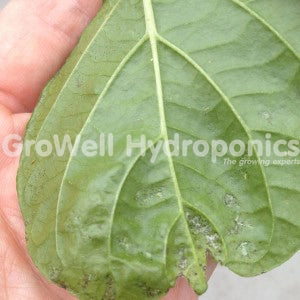
Malformed Pepper Leaf Caused by Thrips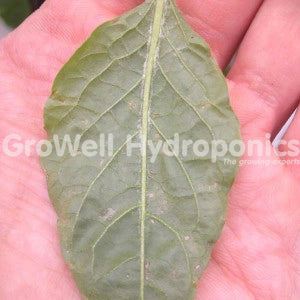
Severe Thrips Damage on Pepper Leaves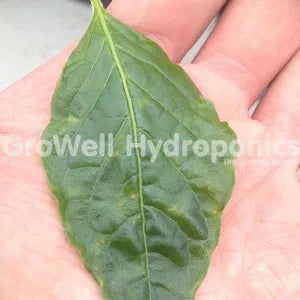
Thrip Damage on the Top of a Pepper Leaf
Adult Thrips, Larvae & Waste on a Pepper Leaf
Thrip Damage on the Underside of a Pepper Leaf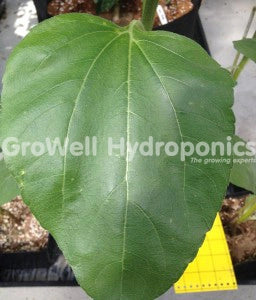
Early Signs of Damage Caused by Thrips on a Sunflower Leaf
Fungus Gnats
Fungus Gnats are quite a common grow room problem.
Identify
You know you’ve got them if you have small, slow moving black flies in your grow room. Yet it’s the larva that upset your plants, eating roots and slowing overall growth.
Combat
Lower your grow room humidity and growing media water level. That’s normally all you need to do.
If not, add Nematodes to the root zone – they’re 100% effective and are bound to do the trick.
Don’t forget to place sticky yellow traps around your grow room to helps capture the flies and identify the problem early.
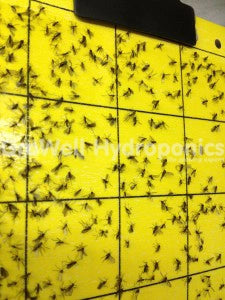
Adult Fungus Gnats
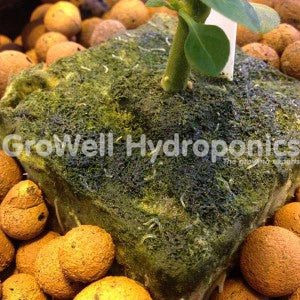
Fungus Gnat Larvae
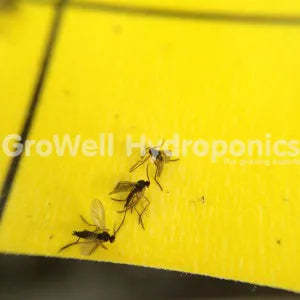
Close up of Fungus Gnat Larvae
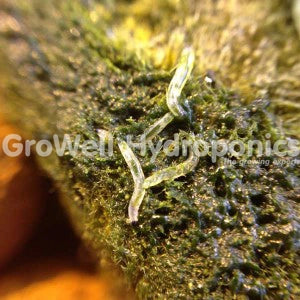
Close up of Adult Fungus Gnats
Leaf Miner
Leaf Miner Larva look similar to Thrip Larva, but they move far more slowly and are less of a risk.
Identify
These tricky little critters live within the leaf itself, so you’re only really likely to notice foliar damage – not the actual larva. Look out for colour loss and leaf imperfections caused by them feeding.
Combat
A good spray of Pyrethrum 5 EC / Protector promises to deal with the problem.
Don’t worry too much about harmed leaves – the vigorous growth rates of plants under HID lights means that they’ll often outgrow any damage.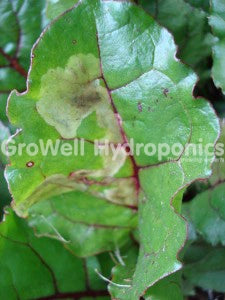
Leaf Miner Damage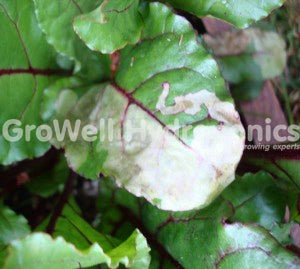
Leaf Miner Damage
Leaf Miners on a Plant
Aphids
Aphids feed on new vegetative growth and flowering sites. They suck up the sugary liquid from the phloem tissues using a straw-like proboscis (elongated nose or snout).
It’s startling how quickly they can lay eggs and grow. And they munch up masses of plant material, maiming your leaves and stems. If left untreated, eventually your plants will die.
Identify
Watch out for leaf and stem deformities. You might also spot drops of honey dew on leaves – a waste product that aphids shed onto lower leaves. Eventually, this sticky substance changes into a black sooty mould.
Combat
Cut off the most infected parts of the plant, including many of the new flowering sites. Then use a decent insecticide spray, such as Pyrethrum 5 EC / Protector.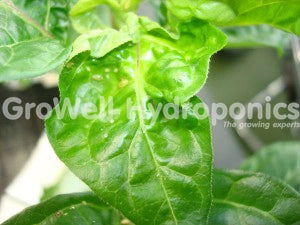
Aphids on Pepper Leaves Showing Distorted Growth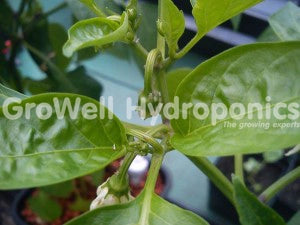
Aphids on Pepper Bud
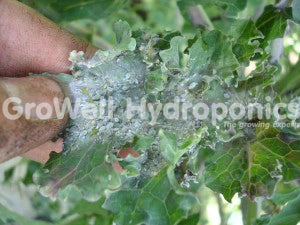
Cabbage Aphids with White Wax Coating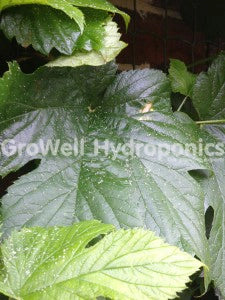
Aphid Skin Moults on Hop Leaves
If you're currently suffering from a bad infestation and the pests in question don't match up with any of those above, give us a call, start a live chat or visit your local store for more advice.



